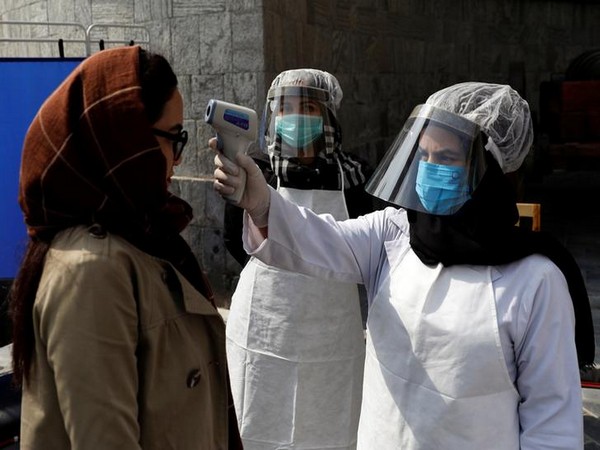COVID-19 may push Afghanistan’s poverty rate to nearly 70 percent: UNDP report
With 11.3 million people in acute food insecurity in 2019, Afghanistan was already extremely vulnerable even before the pandemic: It was ranked 180th out of 185 countries assessed.

- Country:
- Afghanistan
The COVID-19 pandemic so gravely threatens already impoverished Afghanistan that warring factions should do “whatever it takes” to defuse conflict and transparently redirect resources to invest in people, according to a new assessment by UNDP.
COVID-19 could push Afghanistan’s poverty rate to nearly 70 percent, straining the country’s meager health system and demanding interventions far beyond what the Government can afford. But it also represents an opportunity to fundamentally transform and strengthen the Afghan economy, while sound Government decision-making could prompt more generous pledges at the November 2020 Afghan donor conference in Geneva, the study says.
“To create fiscal space, the intensity of conflict needs to be reduced—doing whatever it takes, including previously unprecedented political choices to join forces against a common enemy, the virus, to save lives. The saved resources need to be recycled to people—equitably in all regions and transparently to build trust. These require joint action of previously opposing forces.”
The assessment, conducted by UNDP Afghanistan and released 28 July, projects global and regional impacts of the pandemic will cause Afghanistan’s GDP to plunge 6.25 percent in 2020, down from pre-pandemic projections of 3 percent growth. The poverty rate is expected to surge by 13 percentage points, from 55 percent to 68 percent of the country.
“UNDP believes that it is the opportune moment to fundamentally transform and strengthen the Afghan economy via the implementation of socio-economic protection programs, alleviating COVID-19 hardships and reducing the probability of likely social unrest, especially among young people,” UNDP Resident Representative Abdallah Al Dardari said. “UNDP’s strategically targeted support could allow micro, small, and medium-sized businesses to generate US$4 worth of additional economic value and jobs for each US$1 spent on related programs.”
“Demonstrating that extraordinary times have led to extraordinary decisions from the country’s decision-makers would also greatly strengthen the case for enhanced foreign assistance,” notably ahead of the upcoming Afghan donor conference in November, Al Dardari said.
Assuming medium infection and transmission rates, as the Government has defined them, addressing the pandemic—with additional beds, equipment, and personnel—would cost US$250 million, according to early estimates. Such measures would require months to implement, given the weakness of the existing health system, continuing conflict, and a political impasse following 40 years of war.
Addressing socio-economic impacts of the pandemic through income support and other measures even for six months would require funds far beyond what the Government can provide, though income support only for the elderly and IDPs or returned refugees for six months or a 100-day civil works program would be feasible, the study finds. Reducing waste and adopting sound new fiscal, monetary, financial, trade, and private sector development policies to counter the impact of COVID-19 and set the economy on a sustainable, equitable medium- and longer-term path will be vital.
Suffering at the country level
As of 18 July, Afghanistan had reported more than 35,000 infections and more than 100 COVID-19 deaths, with some 700 new cases reported daily and more than one-third of confirmed COVID-19 cases were among doctors and health-care staff. A large influx of refugees returning from Iran and Pakistan—without proper quarantine and containment measures—has worsened the viral spread.
With 11.3 million people in acute food insecurity in 2019, Afghanistan was already extremely vulnerable even before the pandemic: It was ranked 180th out of 185 countries assessed. Some 90 percent of the Afghan population now requires food assistance and medical attention, while UNICEF has said 12 million Afghans could be pushed into food security deprivation.
An estimated 15 percent of Afghanistan’s 37 million people, including internally displaced people (IDPs), still lack access to hospitals in their vicinities. Afghanistan also has the lowest number of hospital beds per 1,000 people in the entire Middle East and Central Asian region—one bed versus a regional average of four. The Government also spends the least in the region on health care, at less than 1 percent of GDP.
Among its recommendations, which will inform programs and policies in response to the pandemic, the report calls for:
- Coordinated, joint dissemination by both the Government and the Taliban of mutually agreed information aimed at curbing the disease.
- Focused resources to ensure the protection of health-care workers.
- Public works that employ both males and females with a focus on immediate health care, health system strengthening, public information, peace and reconciliation, and agricultural needs to ensure food security.
- Stepped-up efforts to reduce conflict, including “previously unprecedented political choices” to join forces against a common enemy and create fiscal space to respond to the pandemic.
- A halt to wasteful spending and greater budget transparency.
- Cash distributions to the elderly, which would also benefit family members with whom elderly Afghans generally live.
- Promotion of select Afghan exports.
- READ MORE ON:
- COVID-19
- UNDP
- Afghanistan
- economy
- GDP
- Abdallah Al Dardari
ALSO READ
CDC's Updated COVID-19 Vaccine Guidelines Unveiled
Escalating Conflict in Lebanon Threatens Economic Collapse: UNDP Warns of Severe GDP Decline and Rising Unemployment
UNDP and UN Partners Tackle Small Arms Proliferation and Armed Violence, Bolster Security and Gender Equality Initiatives
Afghanistan A Clinch Victory, Set up Final Clash
Afghanistan A Tackles Undefeated India A in ACC Emerging Asia Cup Semifinal










